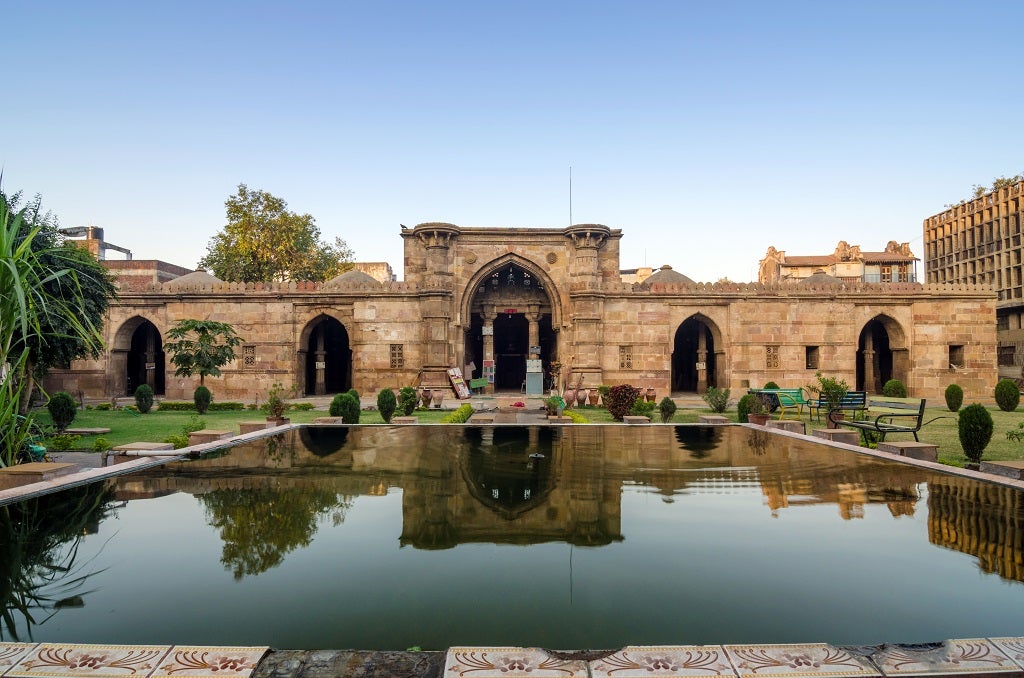Moving to Ahmedabad
Ahmedabad
-
Affordability 5 out of 5
-
Safety 4 out of 5
-
Healthcare 3 out of 5
-
Traffic Flow 1 out of 5
-
Property affordability 3 out of 5
-
Climate 3 out of 5
-
Environment quality 3 out of 5
In 2011 the Times of India named Ahmedabad as the best city to live in in India, and with good reason. The city on the banks of the Sabarmati River has a colourful and intricately woven cultural tapestry that was begun in the 11th century and which incorporates breathtaking works of public art, inspiring displays of religious celebration and a mouth watering variety of culinary delights in its warp and woof.

It was the textile industry which grew Ahmedabad from a small trading outpost into an internationally important economic centre, once known as the ‘Manchester of the East’. Today, the largest city in the state of Gujarat, Ahmedabad is one of the new breed of Indian metropolises charging headlong into the 21st century with an army of skilled workers producing goods for the traditional textile industry as well as the automotive and pharmaceutical sectors.
A stronghold of the Indian independence movement and a base of Mahatma Ghandi, Ahmedabad’s modern history is as rich as its medieval history. Stunning and well preserved mosques, Hindu and Jain temples tell the story of the three major groups which today make up the large part of the populace and contribute to the ever expanding diversity, ever growing energy and ever filling festival calendar of Ahmedabad.
Moving to Ahmedabad from the UK
A growing number of white collar workers are moving from the UK to Ahmedabad to participate in India’s continued economic growth and to expand their cultural and linguistic boundaries. It should be understood however that Ahmedabad is quite different to Mumbai and Delhi in that it is less Westernised and English speaking is less widespread (though most who are moving for work are doing so within a corporation, making this less of a concern). Gujarati and Hindi are the most commonly spoken tongues.
Select the size of your move to get free quotes
There are however a fair number of Western-style or international schools and a small but welcoming community of expats.
Alcohol is prohibited to Indians in the state of Gujarat but non-nationals may purchase booze from liquor shops in large hotels with a permit. Consuming alcohol without a permit is not illegal but all drinking is generally done behind closed doors (there is no alcohol on the menu in restaurants).
Property prices are falling in most cities in India, following a long boom between 2002 and 2007, and Ahmedabad is no exception. The average price of property per metre ranges from INR 21,000 (£205) to INR 68,000 (£665) depending on the location.
Comparing Ahmedabad vs London
Ahmedabad has a hot semi-arid climate which means it’s a good deal hotter than London. In the hottest months of May and June average high temperatures rise to around 33 °C, around ten degrees higher than London’s average highs, and the Sabarmati River dries to a thin trickle. Even though Ahmedabad sees more average annual rainfall than London (33% more in fact) almost all of this falls in the wet season between June and September. Average low temperatures don’t get below 11 °C even in January.
Considerably lower property prices, rents, restaurant, supermarket, utility and transport bills make the cost of living in Ahmedabad a mere fraction of that in London. Average salaries are also much lower however, leading to reduced local purchasing power.
On average Amdavadis report themselves as feeling safer than Londoners and as receiving only marginally poorer healthcare. They do spend an equally long time commuting though, on average, and experience a great deal more pollution.
Ahmedabad’s vast array of cultural attractions range from the many festivals which accompany religiously significant days (Navaratri, Deepavali, Holi, Eid ul-Fitr and even Christmas); through the amazing architecture of the Indo-Saracenic temples and works by Le Corbusier; to the bustling street markets selling everything from folk art to hot food.







